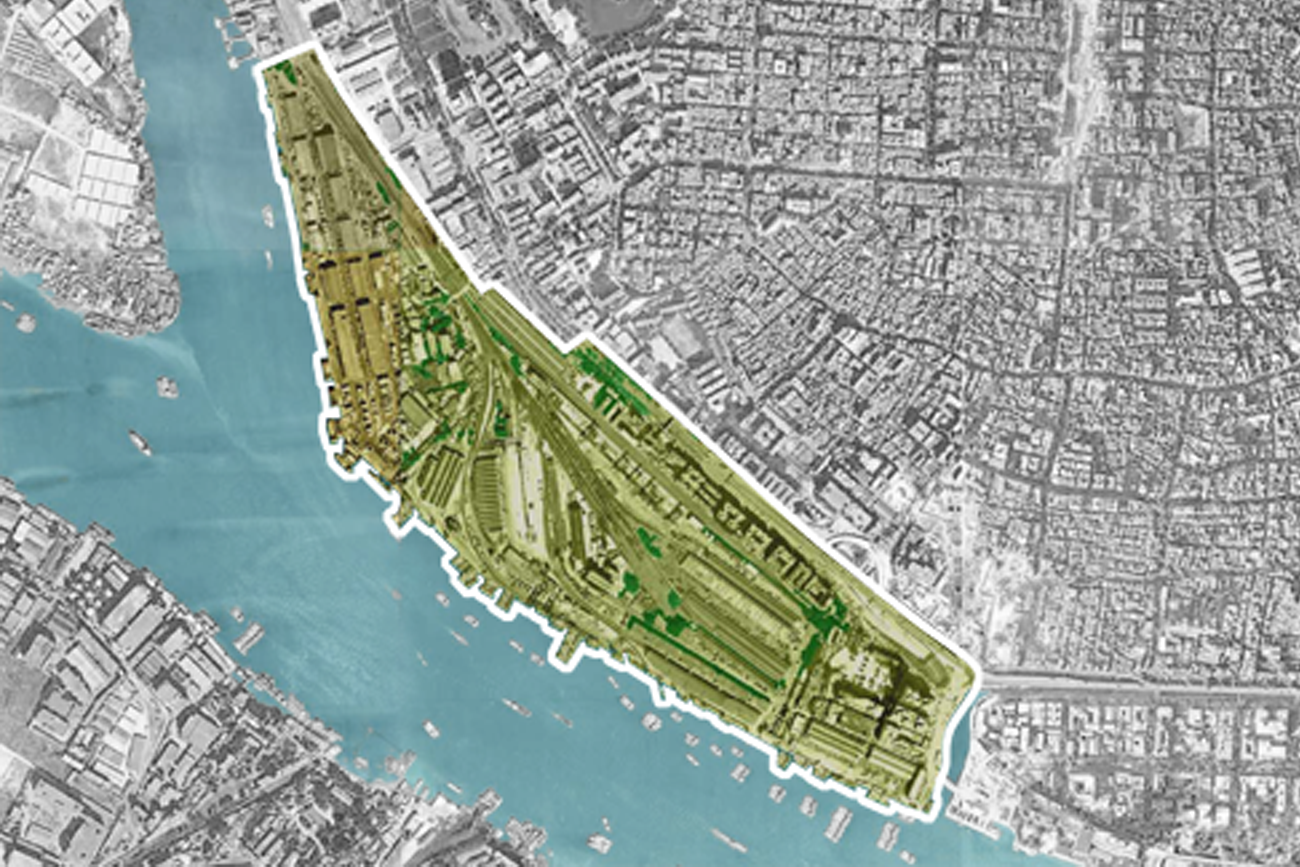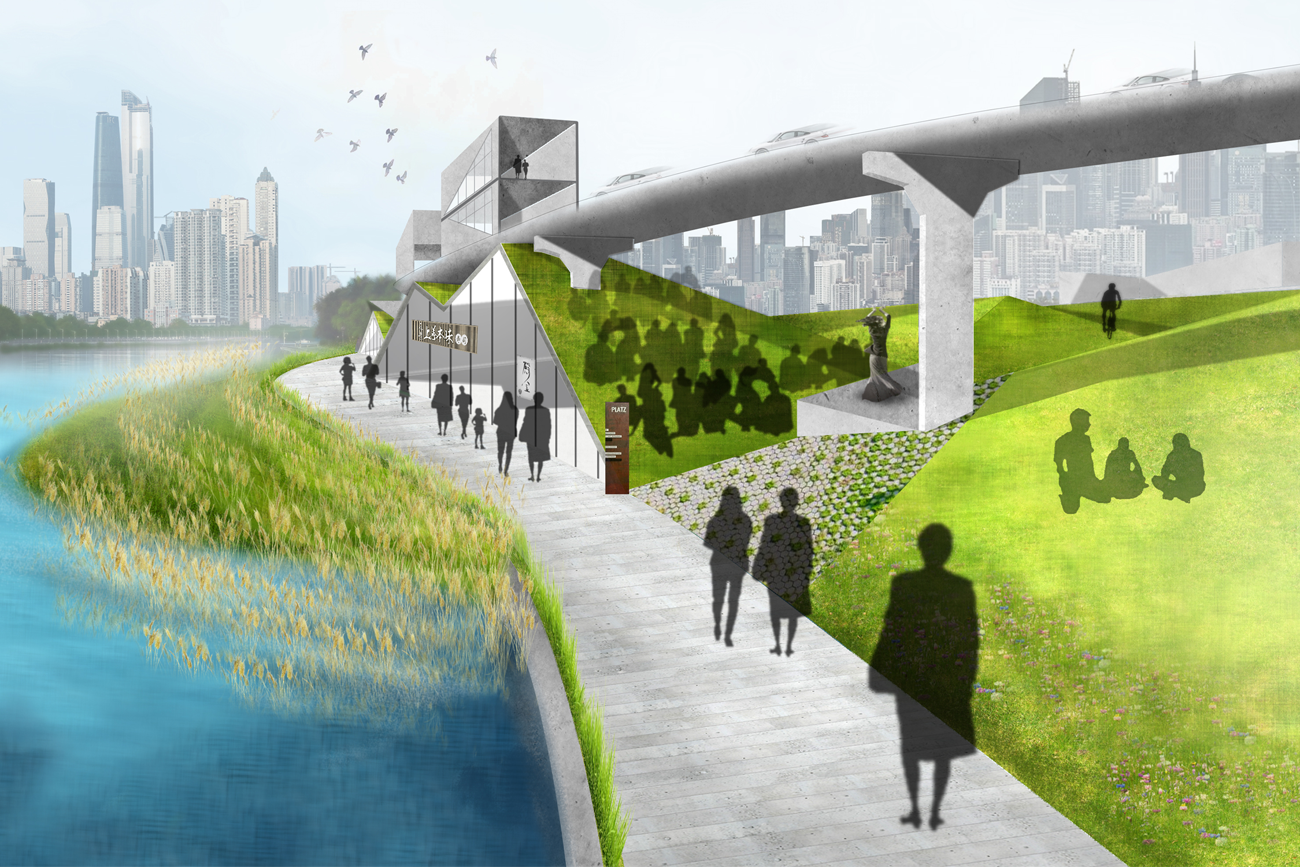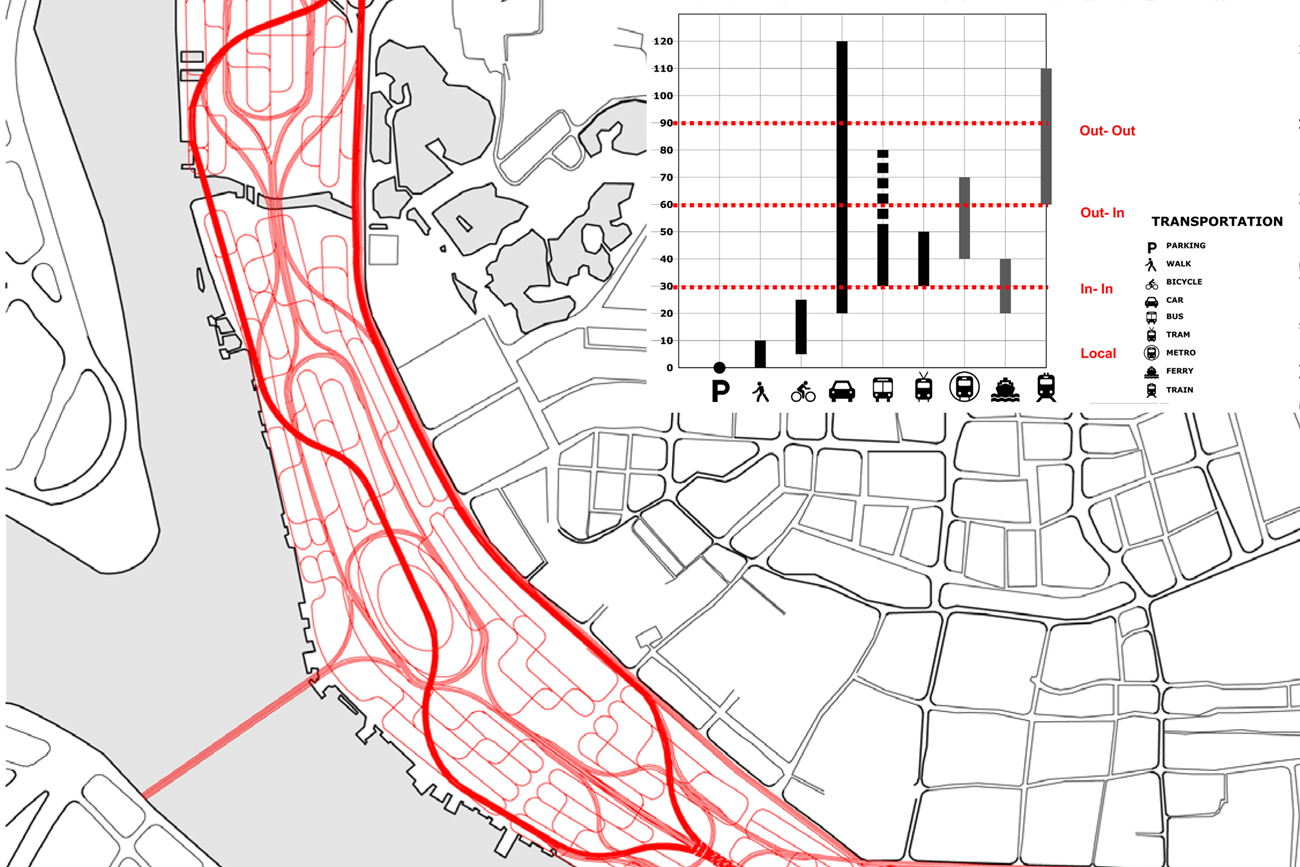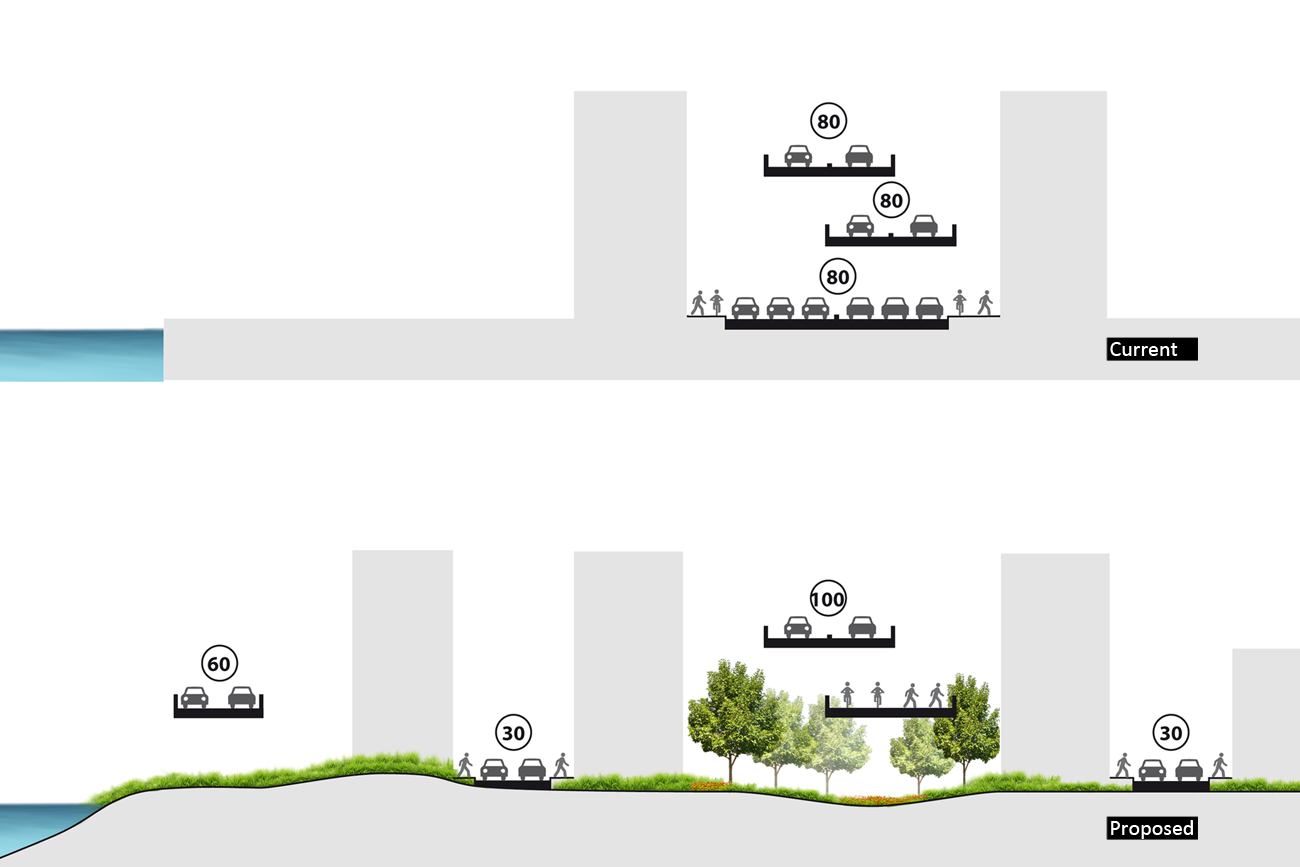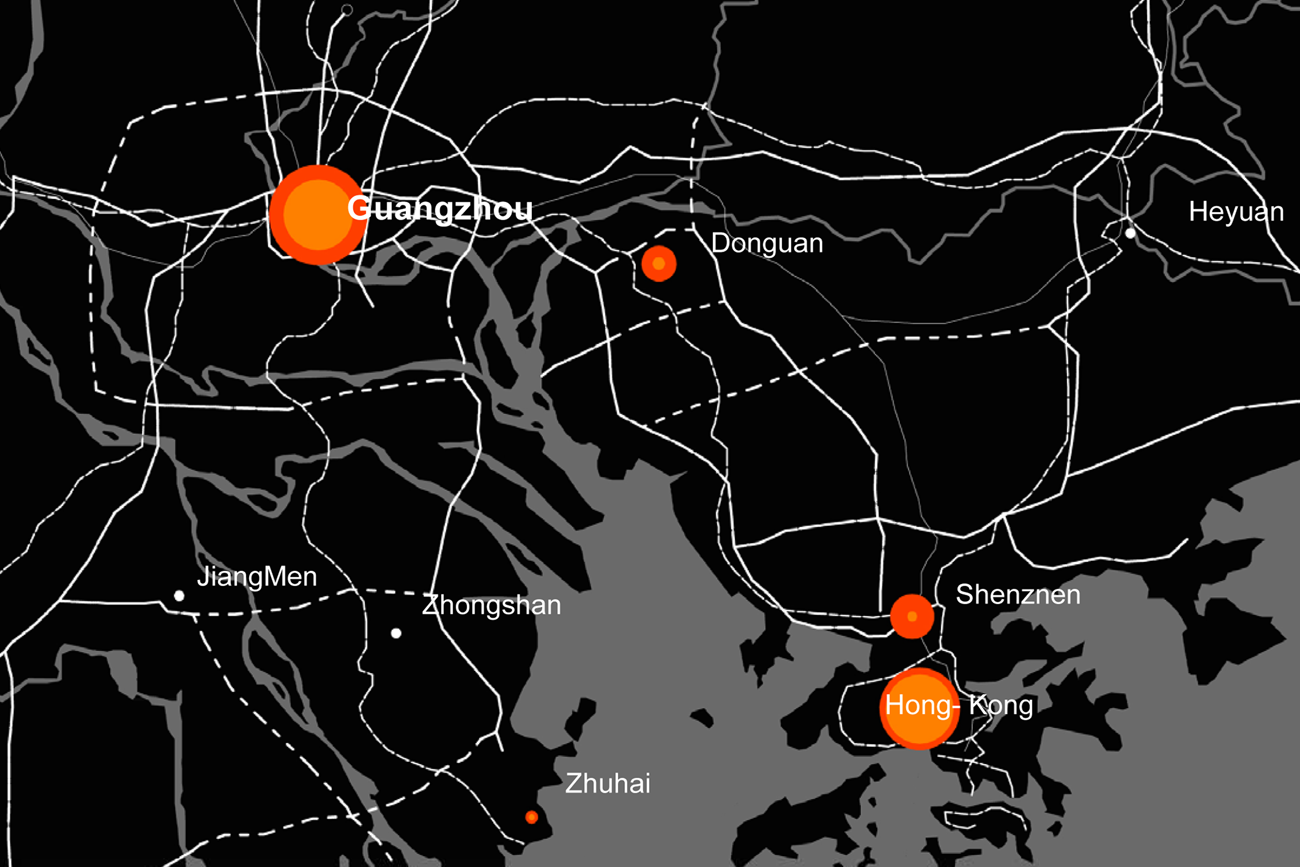Guangzhou, China
Guangzhou waterfront
Design for transforming a transportation zone into an integrated urban waterfront landscape
Guangzhou is a fast-growing city in China. The rapid urban growth results in high and rapid densification, with associated mobility and traffic challenges. Additionally Guangzhou is threatened by flood risk caused by either peak river discharges or storm surges from the Zhejiang river estuary. Now that the former railway depot positioned between the inner ring road and the Zhejiang river has become abundant, the site can be redeveloped.
The ring road, once constructed along the cities’ edges, is now part of the city centre. Given its size of 2×4 lanes, it cuts through the city, creating an barrier between the residential area and the waterfront. The first guiding design principle is to integrate the ring road with its environment. By creating different lanes for different speeds, and dispersing them those across the site, the barrier impact is reduced and a landscape is created in which mobility and urban life coexist.
Along the waterfront a levee park is created, forming a landscape connection between the elevated roads and the waterfront. Along this public space various public routes and places are created varying from informal gathering places and food markets to formal promenades. Residential and commercial buildings including a football stadium, are positioned within the landscape setting.
Client: Peugot Citroen City on the Move (IVM), Municipality of Guangzhou
In cooperation with: Guangzhou University
Guangzhou is een snel groeiende stad in China. Die snelle groei resulteert in hoge en snelle verdichting die veelal in verband kan worden gebracht met mobiliteits- en verkeersproblemen. Daarnaast wordt Guangzhou ook nog eens bedreigd door een hoog overstromingsrisico veroorzaakt door het tij van de Zhejiang rivier. Nu het oude treinstation tussen de binnenste ringweg en de Zhejiang rivier overbodig is geworden, kan deze plek getransformeerd worden.
De ringweg, ooit gebouwd langs de randen van de stad, is nu onderdeel van het stadscentrum. Echter, omdat de weg bestaat uit 2 x 4 rijbanen, snijdt deze recht door het hart van de stad en creëert zo een barrière tussen de woongebieden en de waterkant. Door verschillende lanen te creëren voor verschillende snelheden, en deze te verspreiden door de stad, kan het effect van de barrière worden verminderd en kan er een landschap ontstaan waarin men mobiliteit en wonen zich laten combineren. Langs de kade wordt een dijkenpark ontwikkeld, waardoor er een landschapsverbinding ontstaat tussen de verhoogde wegen en het water. Door deze publieke ruimte lopen verschillende routes naar plekken die gebruikt kunnen worden als lokale ontmoetingsplaatsen of als voedselmarkten of wandelpaden. Woonhuizen en commerciële gebouwen, zoals een voetbalstadium, hebben allemaal hun eigen plek in het landschap.
Opdrachtgever: Peugeot Citroen City on the Move (IVM), Gemeente Guangzhou
In samenwerking met: Universiteit van Guangzhou
